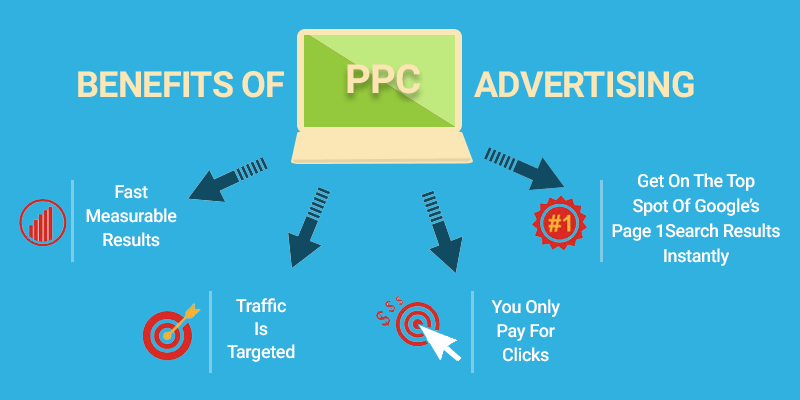Pay-per-click (PPC) advertising is a cornerstone of digital marketing, offering businesses the ability to reach their target audience with precision and measurable results. As we move through 2024, the landscape of PPC advertising continues to evolve with new technologies, platforms, and strategies. Here’s an in-depth guide to mastering PPC advertising and driving successful campaigns in 2024.
1. Understanding PPC Advertising
PPC advertising involves placing ads on platforms like Google, Bing, and social media channels, and paying a fee each time the ad is clicked. It’s a highly effective way to drive traffic, generate leads, and increase sales, provided it’s done correctly.
2. Choose the Right Platforms
Different platforms cater to different audience segments and campaign goals. Choosing the right platform is crucial for the success of your PPC campaigns.
Key Platforms:
- Google Ads: Ideal for reaching a broad audience with search, display, and shopping ads.
- Bing Ads: Often overlooked, Bing Ads can be a cost-effective alternative with less competition.
- Social Media Ads: Platforms like Facebook, Instagram, LinkedIn, and TikTok offer targeted advertising based on user demographics and interests.
3. Conduct Thorough Keyword Research
Keywords are the backbone of PPC advertising. Effective keyword research ensures your ads reach the right audience.
Keyword Research Tips:
- Use Tools: Utilize tools like Google Keyword Planner, Ahrefs, and SEMrush to identify relevant keywords.
- Long-Tail Keywords: Focus on long-tail keywords that are more specific and often less competitive.
- Negative Keywords: Identify and exclude keywords that are not relevant to your business to avoid wasted spend.
4. Craft Compelling Ad Copy
Your ad copy is crucial in attracting clicks and conversions. It should be compelling, relevant, and aligned with the user’s search intent.
Ad Copy Tips:
- Headline: Create attention-grabbing headlines that include your main keywords.
- Description: Provide clear, concise descriptions that highlight the benefits and features of your product or service.
- Call to Action (CTA): Use strong CTAs like “Buy Now,” “Learn More,” or “Get Started” to encourage clicks.
5. Design High-Converting Landing Pages
A well-designed landing page is essential for converting clicks into leads or sales. Ensure your landing page aligns with the ad and provides a seamless user experience.
Landing Page Optimization:
- Relevance: Ensure the content of the landing page matches the ad’s promise.
- Simplicity: Keep the design clean and the navigation straightforward.
- Clear CTAs: Place clear and compelling CTAs to guide the user towards the desired action.
6. Implement Advanced Targeting Options
Modern PPC platforms offer sophisticated targeting options that allow you to reach your ideal audience with precision.
Targeting Strategies:
- Demographic Targeting: Target users based on age, gender, income, and other demographics.
- Geotargeting: Focus on specific geographic locations to reach local or regional customers.
- Retargeting: Re-engage users who have previously visited your site but did not convert.
7. Utilize Ad Extensions
Ad extensions enhance your ads with additional information, making them more appealing and increasing click-through rates.
Types of Ad Extensions:
- Call Extensions: Include a phone number for direct contact.
- Review Extensions: Display positive reviews or ratings from customers.
8. Monitor and Optimize Campaigns
Continuous monitoring and optimization are crucial for maintaining and improving the performance of your PPC campaigns.
Optimization Tips:
- A/B Testing: Regularly test different ad copies, landing pages, and targeting options to see what works best.
- Bid Adjustments: Adjust bids based on performance data to maximize ROI.
- Quality Score: Improve your Quality Score by enhancing ad relevance, landing page experience, and click-through rates.
- Analytics: Use tools like Google Analytics to track campaign performance and make data-driven decisions.
9. Leverage Automation and AI
Automation and artificial intelligence (AI) can streamline your PPC efforts, saving time and improving accuracy.
Automation Techniques:
- Automated Bidding: Use automated bidding strategies to optimize for conversions or ROI.
- AI Tools: Utilize AI tools for predictive analytics, keyword optimization, and performance forecasting.
10. Stay Updated with Trends and Best Practices
The PPC landscape is constantly evolving, and staying updated with the latest trends and best practices is essential for maintaining a competitive edge.
Keeping Up with Trends:
- Follow Industry Blogs: Read blogs like Search Engine Land, PPC Hero, and WordStream for the latest updates.
- Join Webinars and Conferences: Participate in industry events to learn from experts.
- Network with Peers: Engage with other PPC professionals to share insights and strategies.
Conclusion
PPC advertising in 2024 offers vast opportunities for businesses to reach their target audience and achieve their marketing goals. By choosing the right platforms, conducting thorough keyword research, crafting compelling ad copy, and continuously optimizing your campaigns, you can maximize your PPC success. Embrace automation and stay informed about industry trends to keep your strategies effective and relevant. With these strategies, you can unlock the full potential of PPC advertising and drive meaningful results for your business.
